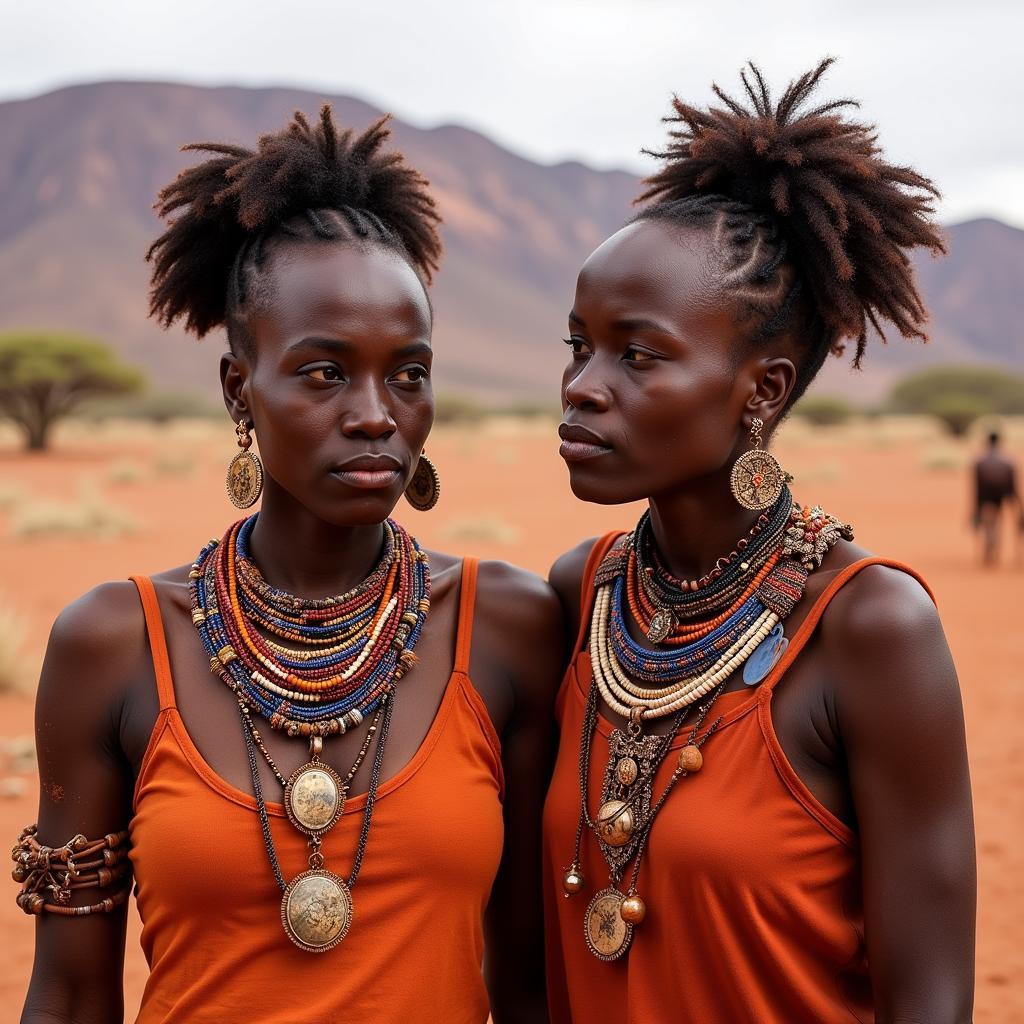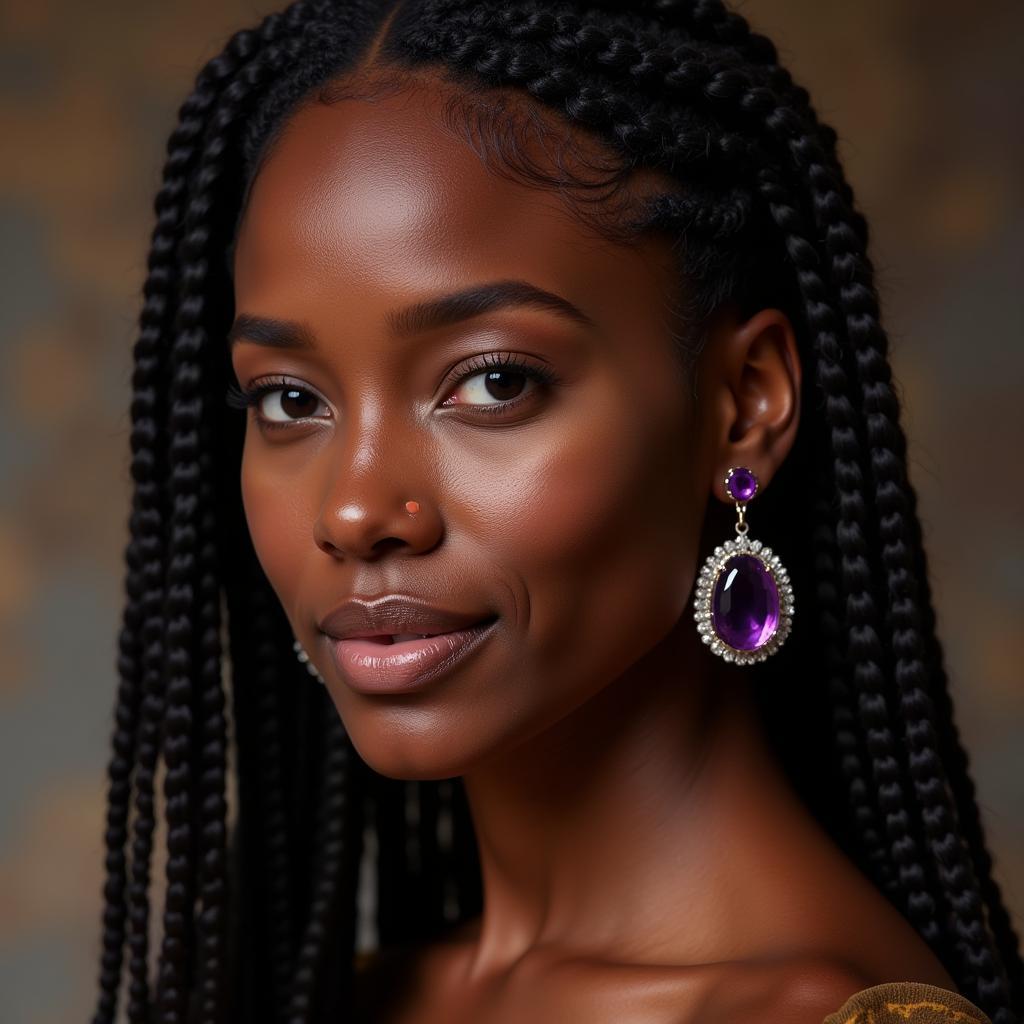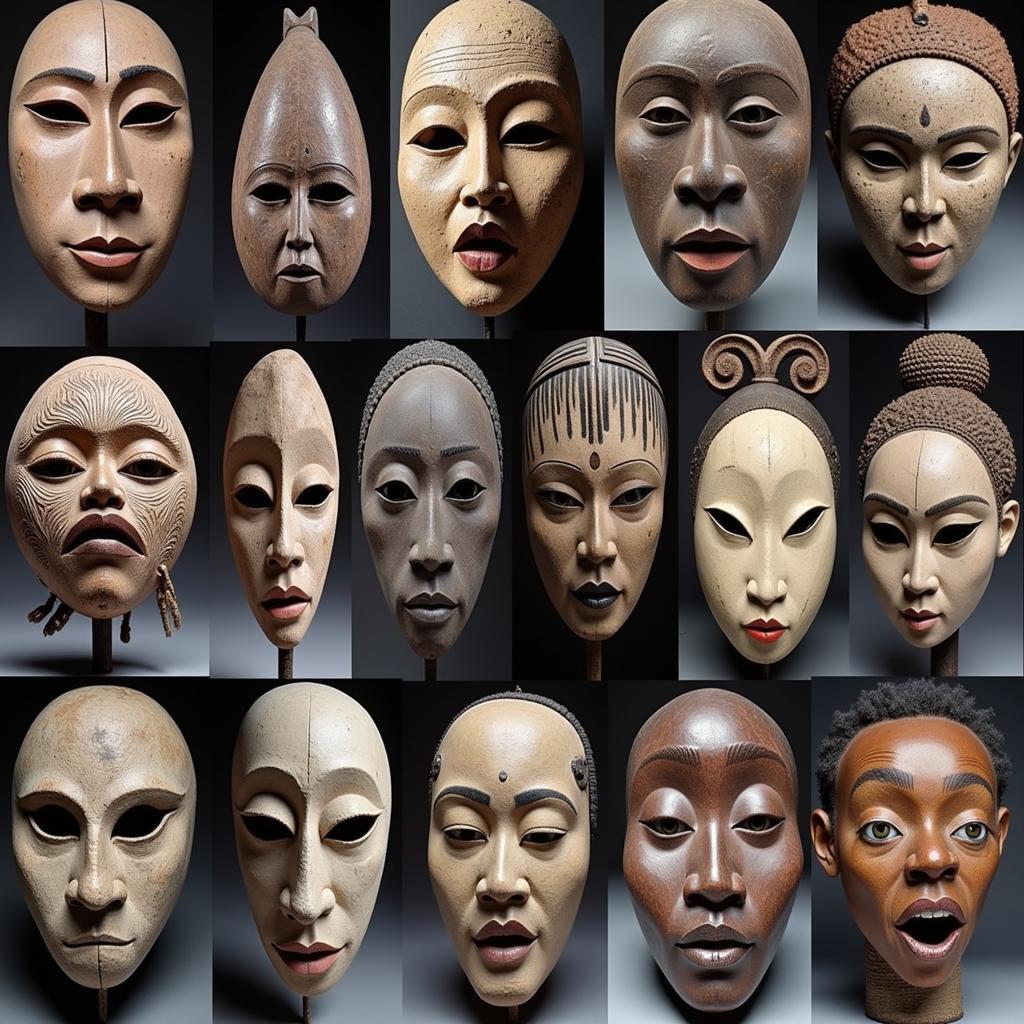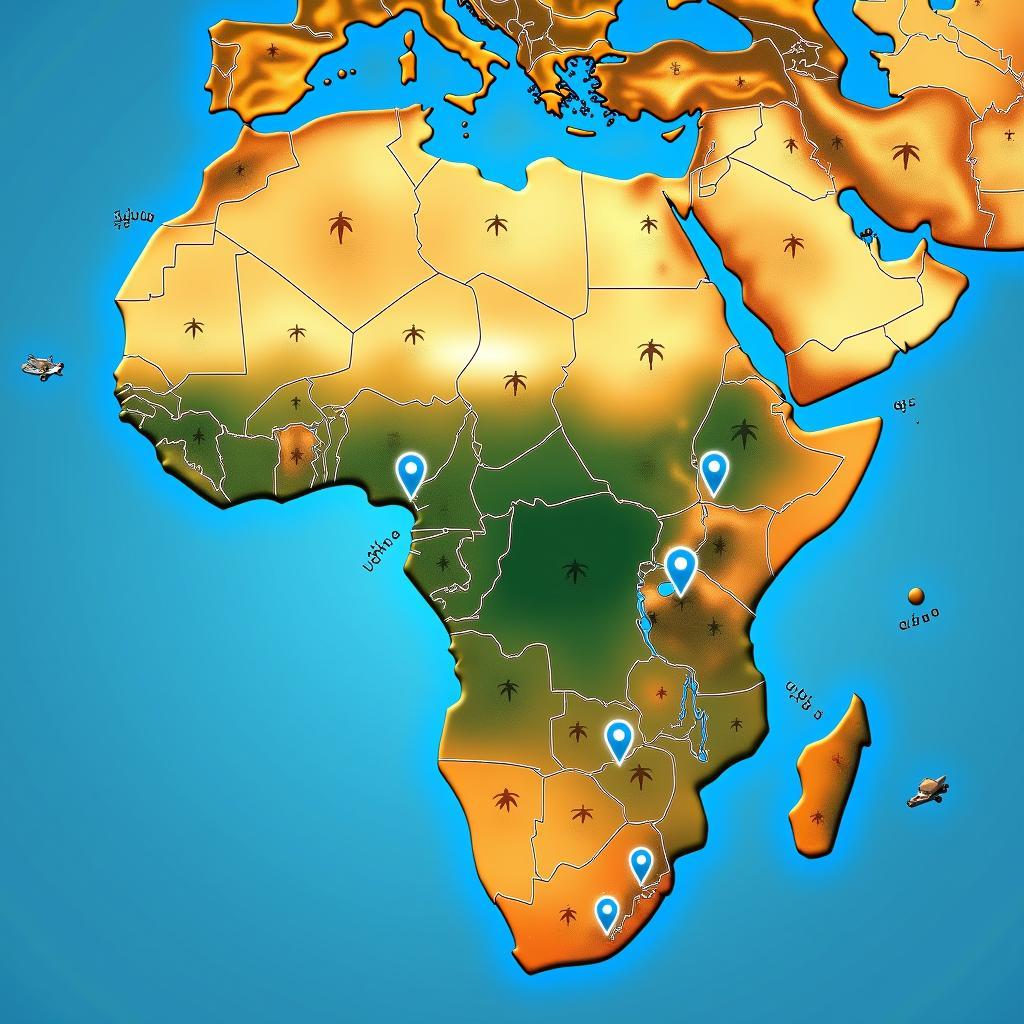Exploring 5 African Tribes: A Journey into Rich Cultures
Africa, a continent of vibrant diversity, is home to thousands of distinct tribes, each with its unique customs, traditions, and stories. This article delves into the captivating world of 5 African Tribes, offering a glimpse into their rich cultural heritage. Let’s embark on a journey to discover the fascinating tapestry of African tribal life.
 Himba Tribe Women in Traditional Dress
Himba Tribe Women in Traditional Dress
The Himba of Namibia: Guardians of an Ancient Tradition
The Himba, residing in the harsh yet beautiful landscapes of northern Namibia, are renowned for their striking ochre-covered skin and hair, symbolizing their connection to the earth and their ancestors. Their semi-nomadic pastoralist lifestyle revolves around their cattle, which represent wealth and status. The Himba’s unique beauty rituals and strong communal bonds offer a fascinating insight into their resilient culture.
What makes the Himba unique? Their intricate hairstyles, often adorned with ochre and intricate braids, signify age and social status within the tribe. Their traditional clothing, crafted from animal hides and adorned with beads, reflects their deep connection to their environment. african female character design
The Maasai of Kenya and Tanzania: Warriors and Cattle Herders
Known for their vibrant red shukas and distinctive jumping dance, the Maasai are a proud warrior tribe inhabiting the grasslands of Kenya and Tanzania. Their deep connection to their cattle and their rich oral traditions are integral to their cultural identity. The Maasai’s semi-nomadic lifestyle and their age-old customs continue to fascinate the world.
How do the Maasai maintain their traditions? Their complex social structure, based on age sets and warriorhood, plays a crucial role in preserving their cultural heritage. Elders hold immense wisdom and authority, guiding the younger generations in the ways of their ancestors.
 Maasai Warrior Performing Traditional Jumping Dance
Maasai Warrior Performing Traditional Jumping Dance
The Zulu of South Africa: A Nation of Warriors and Craftsmen
The Zulu, South Africa’s largest ethnic group, boast a rich history of warrior traditions and intricate craftsmanship. Their vibrant dances, distinctive beadwork, and powerful storytelling preserve their cultural heritage. The Zulu language, isiZulu, is widely spoken in South Africa, highlighting their significant cultural influence.
What is the significance of Zulu beadwork? Their intricate beadwork, vibrant with color and symbolic meaning, communicates messages of love, status, and identity. Each piece tells a story, reflecting the rich cultural tapestry of the Zulu people.
The San of Southern Africa: Ancient Hunters and Gatherers
The San, also known as Bushmen, are among the oldest inhabitants of Southern Africa. Their ancient hunter-gatherer lifestyle, intricate rock art, and profound knowledge of the natural world offer a glimpse into humanity’s earliest origins. The San’s unique click language and their deep spiritual connection to the land are testaments to their enduring cultural heritage. african forest fancy dress
The Yoruba of Nigeria: A People of Art and Spirituality
The Yoruba, predominantly found in southwestern Nigeria, are known for their rich artistic traditions, complex religious beliefs, and vibrant festivals. Their elaborate masquerades, intricate wood carvings, and captivating storytelling reflect their deep spiritual understanding of the world. african erotic sex The Yoruba’s cultural influence extends beyond Nigeria, impacting art and music globally. a african hair style
What is the significance of Yoruba masquerades? These elaborate masks, often representing deities or ancestral spirits, play a central role in Yoruba festivals and ceremonies, embodying the rich spiritual and artistic traditions of the Yoruba people. african american dreadlocks styles
Dr. Abimbola Adebayo, a renowned anthropologist specializing in Yoruba culture, notes: “The Yoruba masquerades are not merely performances; they are living embodiments of Yoruba cosmology and spirituality.”
Professor Chinua Mosi, an expert on African tribal art, adds: “The intricate details and symbolism woven into Yoruba art reflect their deep understanding of the interconnectedness of the physical and spiritual realms.”
These 5 African tribes, among countless others, represent the incredible diversity and rich cultural heritage of the African continent. Their unique customs, traditions, and stories offer a captivating glimpse into the fascinating tapestry of human experience. Exploring these cultures provides a valuable opportunity to learn, appreciate, and celebrate the rich tapestry of human life.
In Conclusion: This exploration of 5 African tribes, the Himba, Maasai, Zulu, San, and Yoruba, has unveiled just a fraction of the continent’s cultural richness. Each tribe, with its distinct traditions and customs, contributes to the vibrant mosaic of African Life. Learning about these diverse cultures fosters a deeper understanding and appreciation for the global community.
FAQs (Frequently Asked Questions)
- What is the significance of ochre in Himba culture?
- What is the role of cattle in Maasai society?
- What are some examples of Zulu craftsmanship?
- What is the significance of rock art in San culture?
- What are some key characteristics of Yoruba religious beliefs?
Need more help? Contact us at +255768904061, kaka.mag@gmail.com or visit us at Mbarali DC Mawindi, Kangaga, Tanzania. We have a 24/7 customer support team.


